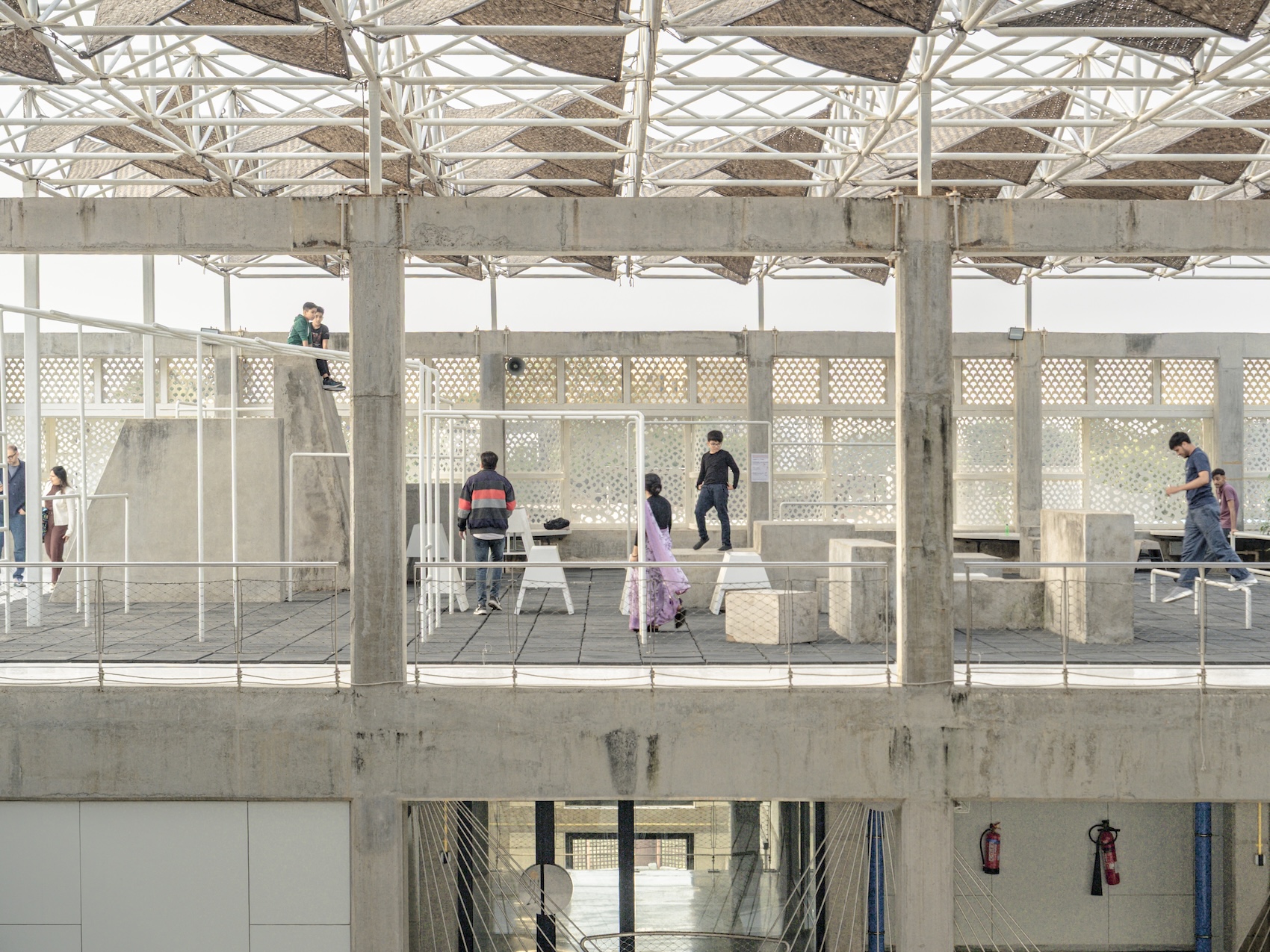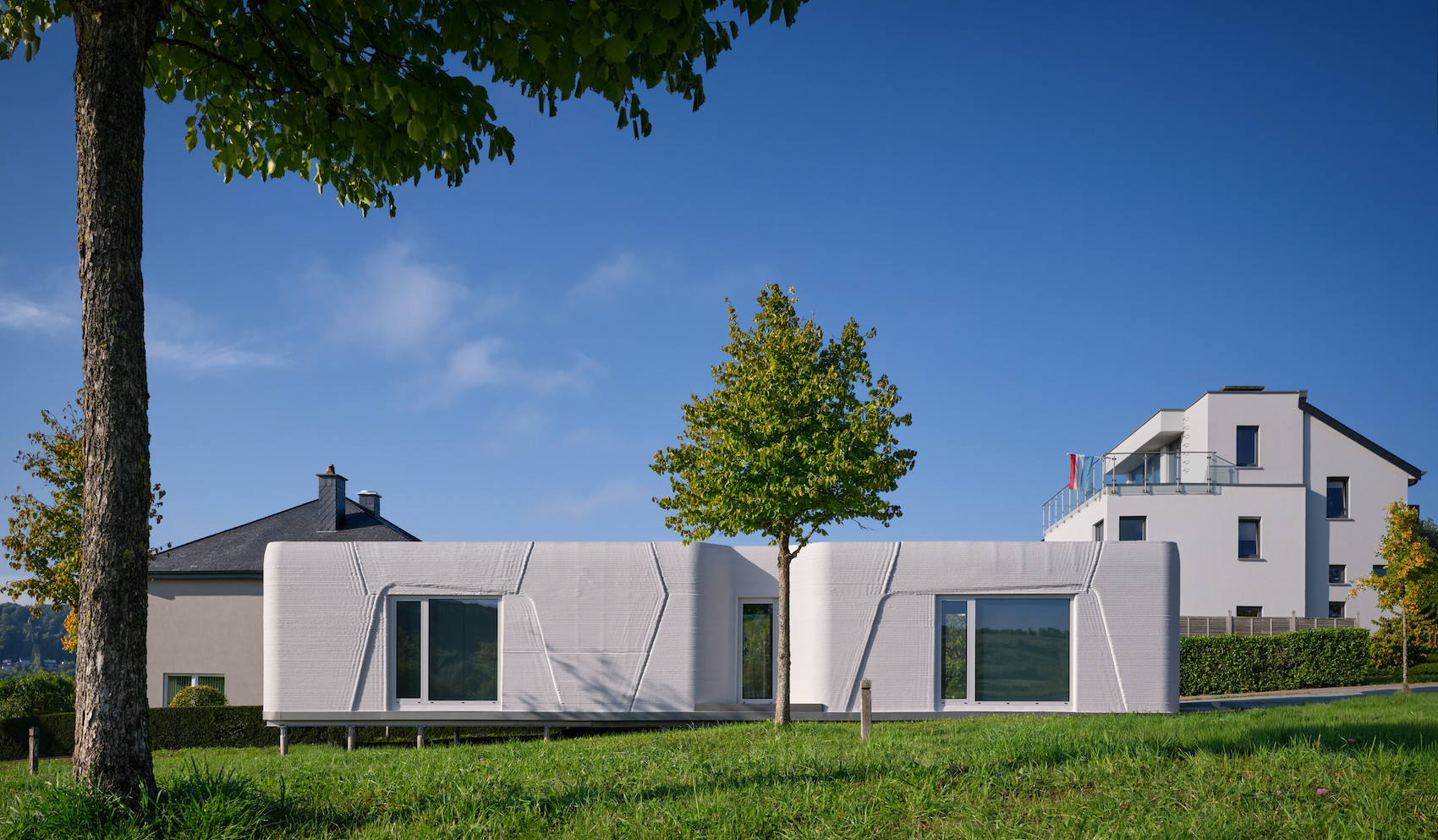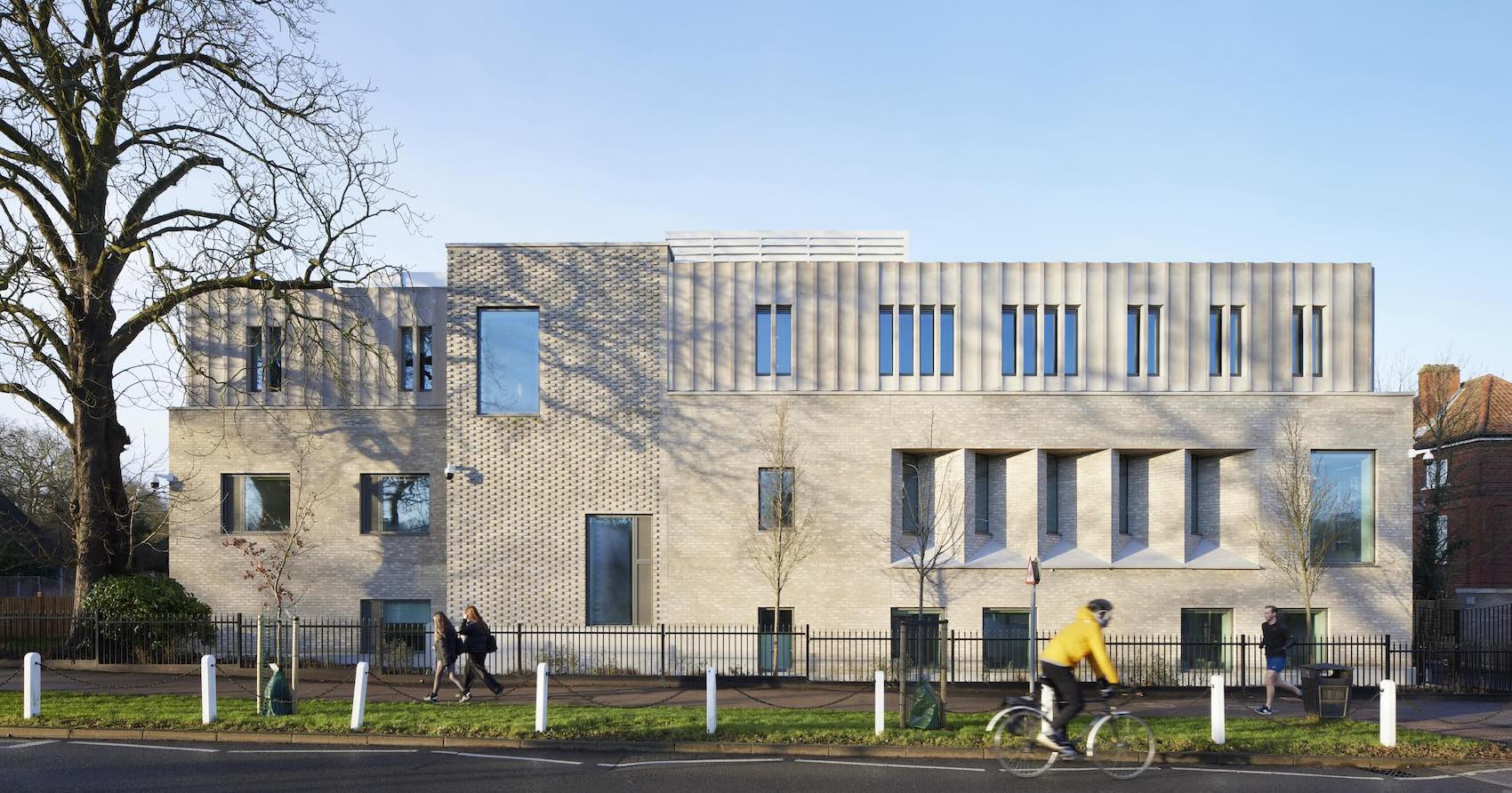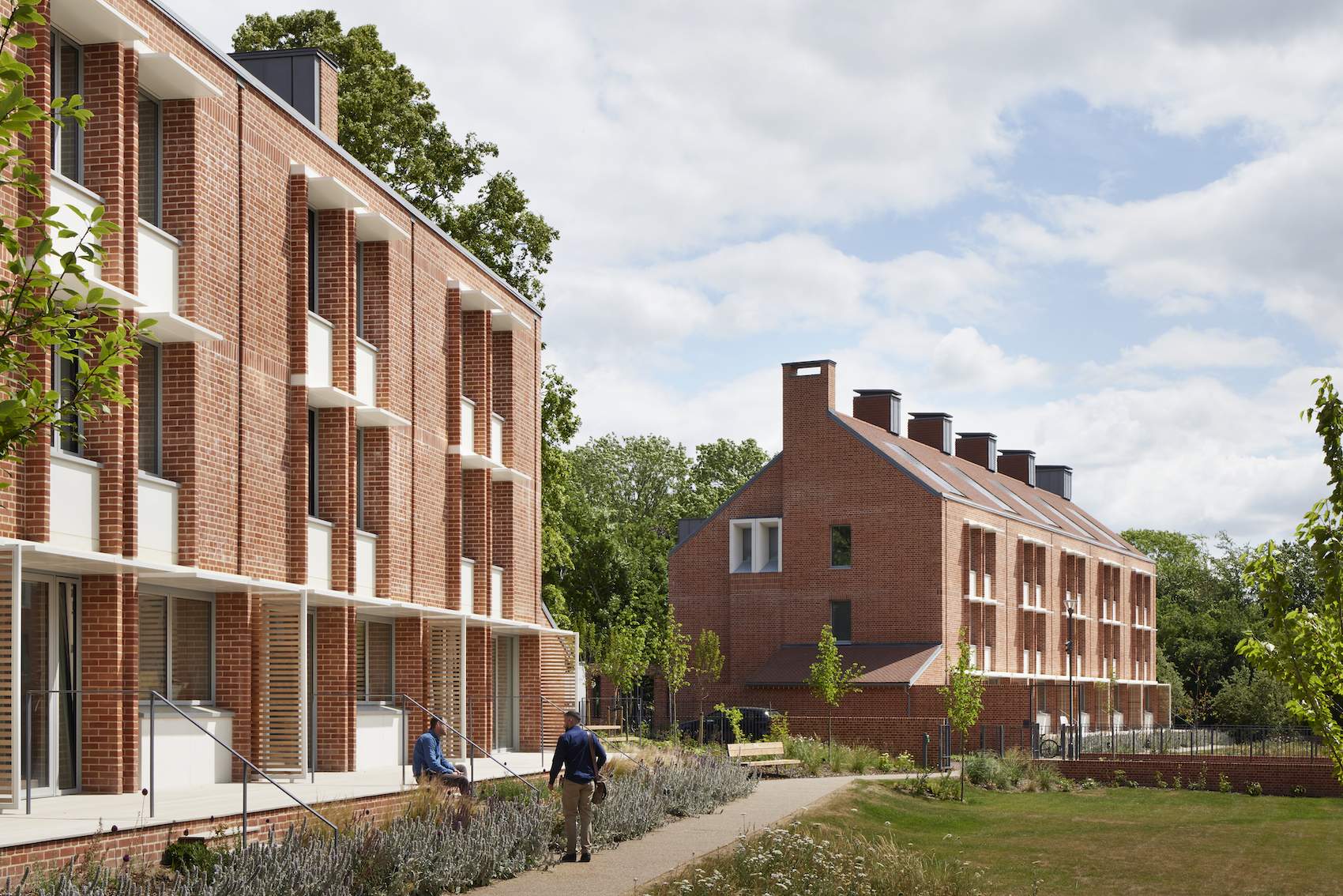An expressive brick house by Scullion Architects forms a close connection with its site
Designed by Scullion Architects, Blackrock House is situated outside the predominantly red brick town of Dundalk in Ireland. The clients, a retired couple, wanted a modestly sized, low-energy, warm and welcoming home that enjoyed sunlight all day long.
The site is the last in a row of plots, which have been sold-off in piecemeal fashion, on former agricultural land. “At the time of design, there was no immediate built context, only the surrounding meadow, zoned to remain undeveloped, and an incomplete access road”, explains the architect. Topographically, the site slopes down to the south, overlooks the meadow to the west, and will have adjoining neighbours to the east.
Site plan, ground and first floor plans; section; worm’s eye axonometric
The 200-squre-metre house faces south-west towards the meadow. L-shaped living spaces are organised around a low-walled brick patio. The more public face of the dwelling gathers scale to the east, where it will adjoin the developing community of individual houses. Clerestory windows allow morning sunlight to wash the sloping white plaster ceiling from the more private east-facing elevation. The master bedroom features a walled courtyard that captures the sun from early morning to late afternoon. Discretely positioned windows on the east elevation allow the occupants to observe unannounced visitors from the interior.
Viewed from the west, the building sits low to the ground, blending in with its environment. Earth tones and natural materials are designed to root the structure in the landscape. Strong geometric forms, emphasised by flush-struck brick mortar joints, stained cedar soffits, and flush panes of glass, reinforce its materiality and man-made presence. Full-height windows to the south and east are sheltered by a timber canopy that extends inside and outside, its structure echoed by the placement of cedar battens that lend rhythm and intimacy to the patio perimeter.
Internally, each room incorporates generous views and individual lighting conditions. Utilitarian areas are located on the northern elevation, which is provided with limited openings to minimise thermal loss. The exception is a glazed door at the end of the corridor, which reveals the excavated hillside. Triple-glazed windows, renewable energy sources and a highly insulated fabric ensure low-energy consumption all year-round.
“The lack of middle ground in the view from the inside engenders the viewer an immediate relationship with the meadow to the west”, says the architect. Variously scaled spaces, including a brick bench reading niche adjacent to the fireplace and a large window seat by the kitchen, imbue the house with a sense of comfort and conviviality.
Additional Images
Credits
Architect
Scullion Architects
Structural engineer
GFM Engineering Consultants
Contractor
EMSM Construction
Brick
Ibstock Olde English Buff
Windows
Nordan
Roof slates
Tegral Thrutone












































